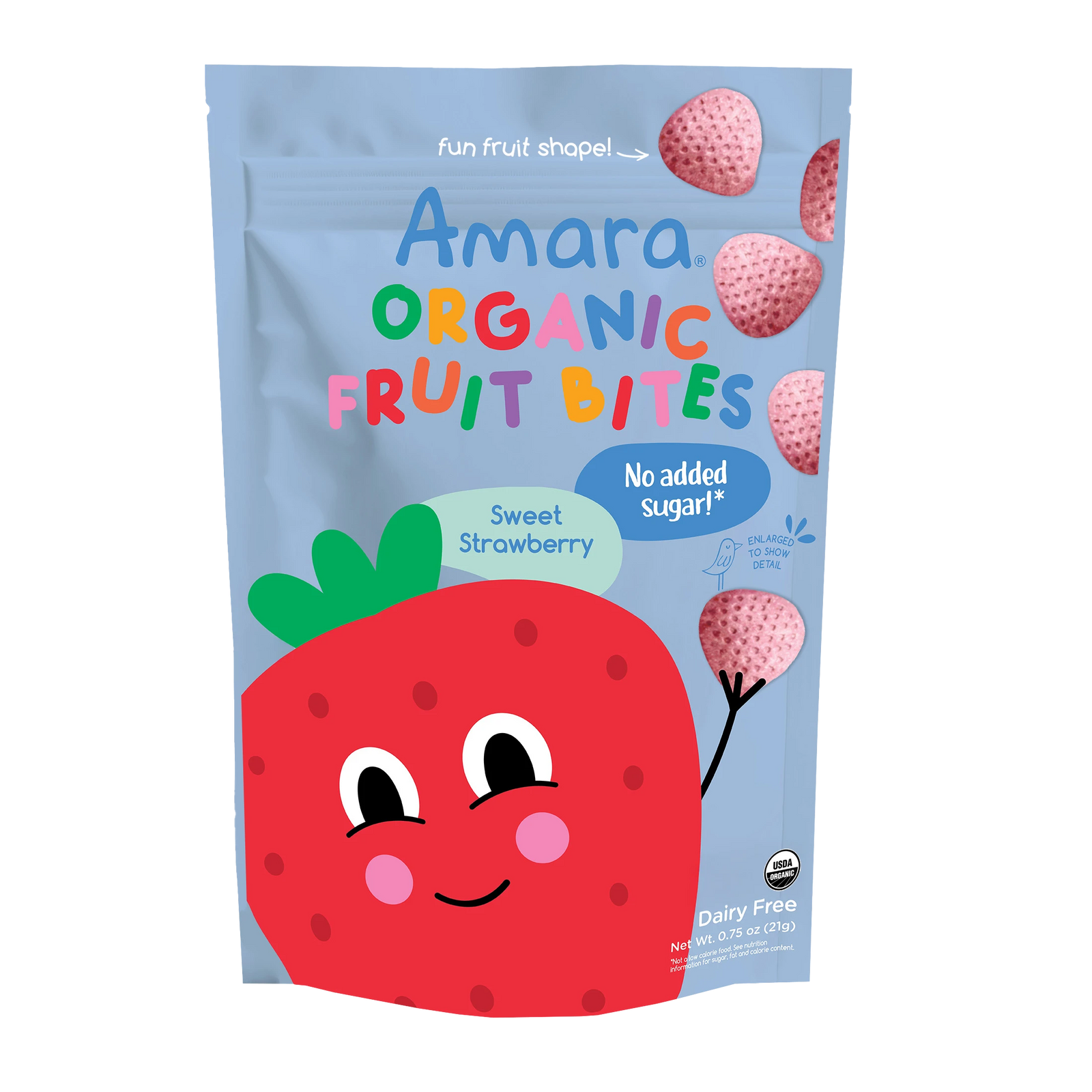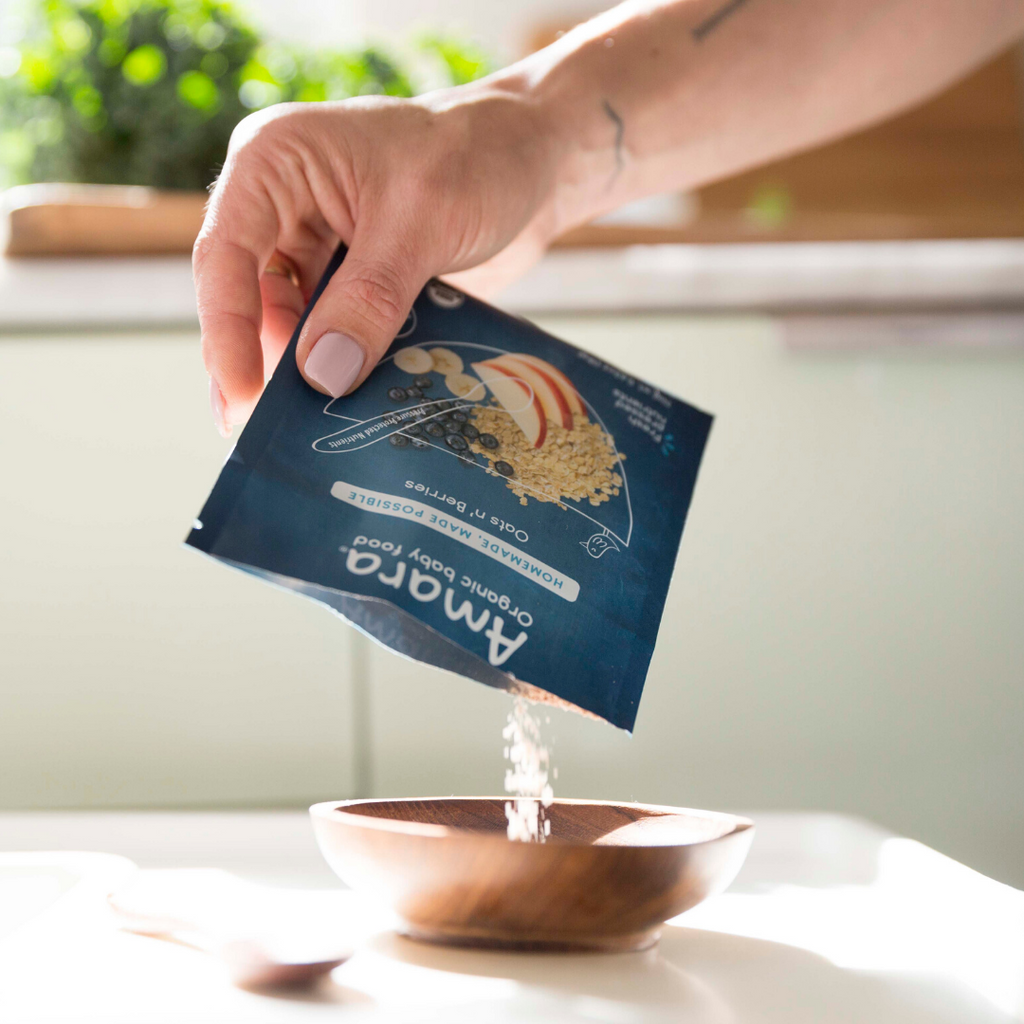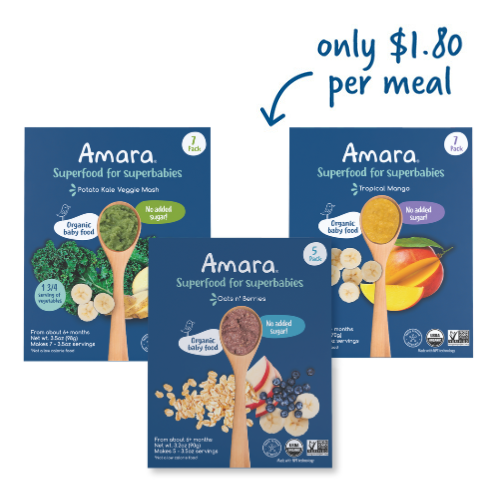As consumers, we see the word “whole grain” thrown out a lot on the packaging of all types of products, but what exactly, is meant by whole grains? What are true whole grains and why do they matter? In this article, we’ll cover what defines a true whole grain, their benefits, and common ways to introduce them into baby’s diet.
What are whole grains?
Until the 19th century, all cereals were consumed as whole grains. Now, however, it has become difficult to identify what whole grains are, where to buy them, and how to best prepare them. Let’s start by clearly defining a whole grain.
A complete whole grain consists of three layers: the bran (outer layer), the germ (middle layer), and the endosperm (inner part). The reason we talk a lot about “whole grains” versus refined grains is because since the Industrial Revolution, most grain products have been stripped of their bran and germ layers, leaving just the endosperm. This created grain products which were considered at the time to be superior in taste, texture, color, and most importantly, extended their shelf life for supermarket sales. If you’ve ever tried to bake a cake with 100% whole wheat flour instead of all-purpose flour, you’ll quickly see and understand the difference.
The only problem with these “improvements” is that this refinement stripped away the most nutritious parts of the grain leaving them depleted of most nutrients. The bran and the germ are packed with the most vitamins, minerals, and phytochemicals found in the grain. The bran delivers fiber for example, while the germ is rich in lipids. Not to mention much research has been done on the efficacy of a food being consumed as a whole, and how each part works together in synergy. In other words, a food is not just a sum of its parts, but all parts work in unison to provide optimal nutrition. So although all purpose flour might make a fluffy cake, it doesn’t make for a healthy food.
As a result, many products containing refined flours, such as common breakfast cereals and breads, are then enriched, which means synthetic vitamins are added back into them. This refinement did not just impact flour. Many other grains were processed down, removing their bran and germ layer, often to quicken cooking time and make the grain softer. Some examples of this are pearled barley (bran removed) and white rice (bran and germ removed).
Why are whole grains important for your baby?
Throughout the world, infant cereals are often one of baby’s first transitional foods and for good reason. They provide a ton of energy, deliver carbohydrates, fiber and protein, as well as vitamins, minerals, and even contribute to a healthy development of gut bacteria. Further, they are excellent vehicles for iron fortification and have a soft, pleasing texture for babies. All in all, whole grains make up the primary source of the world’s food store, and developing a preference for whole grains begins in infancy and can help develop healthy eating habits for life. Unfortunately, many industrialized infant cereals are highly processed and are not delivering the benefits, taste and texture of whole grains. As a result, there has been an effort to incorporate not only infant cereal but also make sure babies are experiencing whole grains in their complementary feeding as well.
Recommendations / How to incorporate whole grains into a baby's diet?
Despite mounting evidence of the value of whole grains in the human diet, specific recommendations regarding a baby’s intake of infant cereals, types of cereals, and degree of processing are still largely undefined. However, evidence strongly suggests that whole grains are better than processed infant cereals, and that whole grains should be introduced as early as possible because that is when taste preference and eating habits are shaped. Due to the discovery of the importance of whole grains starting in infancy, there has been a push to offer some guidelines for 6-24 months. In Spain, for example, they recommend half of all cereal intake in infants should be whole grains. Australia recommends 16 servings a week of whole grains for 12-24 month olds. In the US, one nutrition panel recommends 1 ounce of whole grain a day starting at 12 months and working up to 2.5 ounces a day by 36 months.
Some examples of whole grains that can be served to baby include: millet, wheat, oats, maize, rye, barley and brown rice. Some “pseudocereals” which are not exactly cereals but offer equally nutrient-dense profiles include quinoa, amaranth and buckwheat. Most of these whole grains can be cooked up soft, pureed, and mixed with a fruit or vegetable for a filling meal. When shopping for packaged foods and bread products, search for ones which incorporate whole grain flours, such as whole wheat and rye. When buying flours for baking, consider incorporating whole grain flours into your baking mixes. One of the quickest and easiest ways to incorporate whole foods into baby’s diet is with oats for breakfast.

At Amara, we offer a whole-grain based Breakfast Pack. Our Oats n’ Berries is a base of 100% oats, and our Ancient Grains is a blend of two supergrains, oats and amaranth. With no added sugar, a whole grain profile and delicious taste, this breakfast pack is ideal for babies and big kids alike. Simply mix the packet with the liquid of your choice (breast milk for babies, possibly whole milk or nut milks for bigger kids, or even water anytime), mix to your desired consistency, and serve! It’s delicious warm or cold, and can be endlessly customized with chopped nuts, berries, sprinkles of cinnamon, etc. Rest easy knowing you are building healthy eating habits for life and your little ones are getting their daily dose of whole grains. Shop our Breakfast Pack HERE.
References:
JF Haro-Vicente Sensory Acceptability of Infant Cereals with Whole Grain in Infants and Young Children. Nutrients. 2017 Jan; 9(1): 65.
M Klerks et al Infant Cereals: Current Status, Challenges, and Future Opportunities for Whole Grains. Nutrients. 2019 Feb; 11(2): 473
 Amara's Chief Nutritionist: Sonia A. Schiess, PhD in Nutrition, specialized in the introduction of solids and liquids to infants. Sonia's passion started when she was studying nutrition and dietetics in university, completing a post degree in Human Nutrition. Later on, she completed her PhD as a nutritionist, with a focus on introducing food in the first year of a baby's life. Her wide experience gives her a unique perspective, drawing from her time in clinics, hospitals, independent consulting and university research. She's authored several papers including "Introduction of complementary feeding"; "Introduction of potentially allergenic foods in the infant's diet during the first year of life" and "Intake of energy providing liquids during the first year of life" in five European countries. The combination of Sonia's science and our chef's magic ensures every Amara product is not only optimized for your baby's health but is delicious as well.
Amara's Chief Nutritionist: Sonia A. Schiess, PhD in Nutrition, specialized in the introduction of solids and liquids to infants. Sonia's passion started when she was studying nutrition and dietetics in university, completing a post degree in Human Nutrition. Later on, she completed her PhD as a nutritionist, with a focus on introducing food in the first year of a baby's life. Her wide experience gives her a unique perspective, drawing from her time in clinics, hospitals, independent consulting and university research. She's authored several papers including "Introduction of complementary feeding"; "Introduction of potentially allergenic foods in the infant's diet during the first year of life" and "Intake of energy providing liquids during the first year of life" in five European countries. The combination of Sonia's science and our chef's magic ensures every Amara product is not only optimized for your baby's health but is delicious as well.











I.wish to know more about babies grain food
– Omoniyi Temitope September 24, 2021